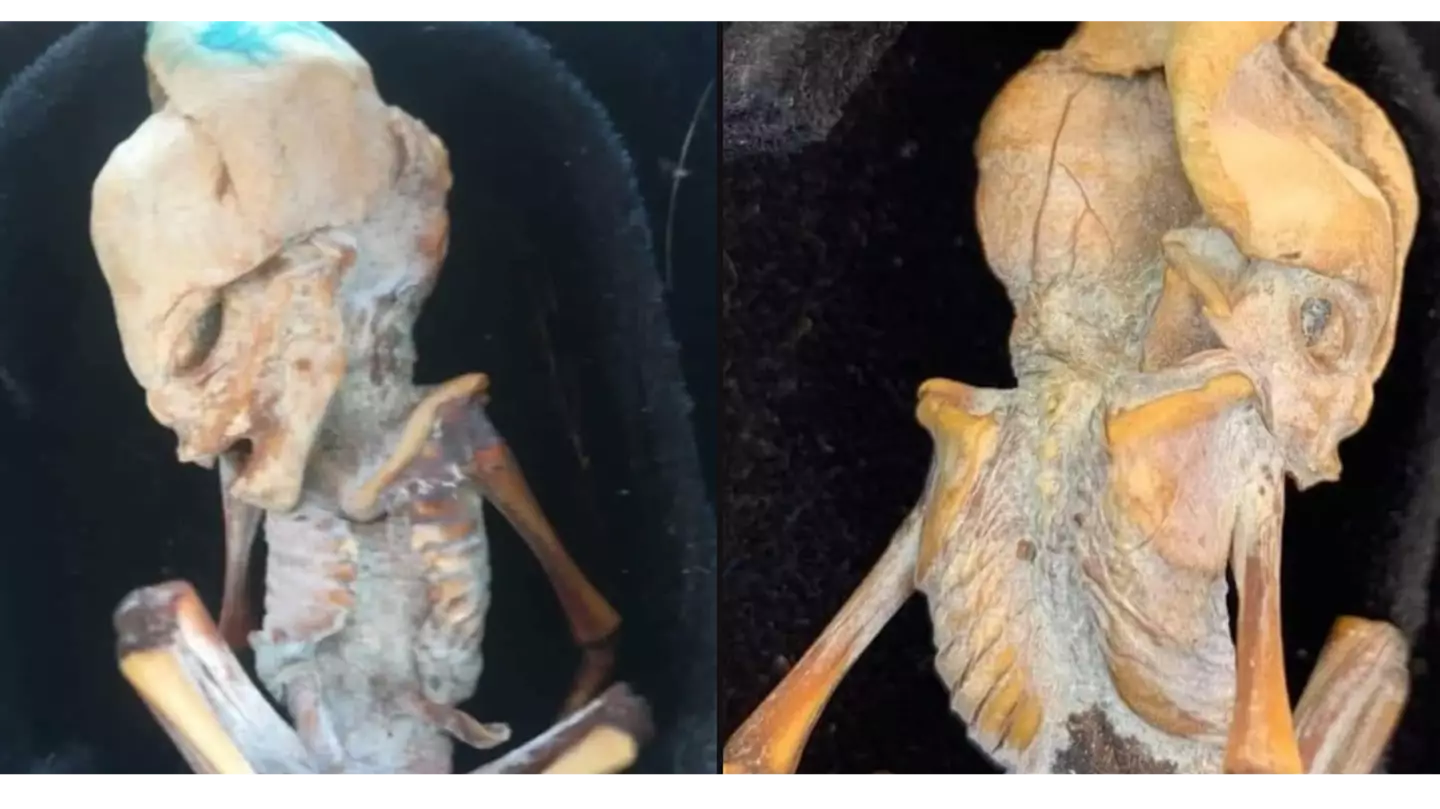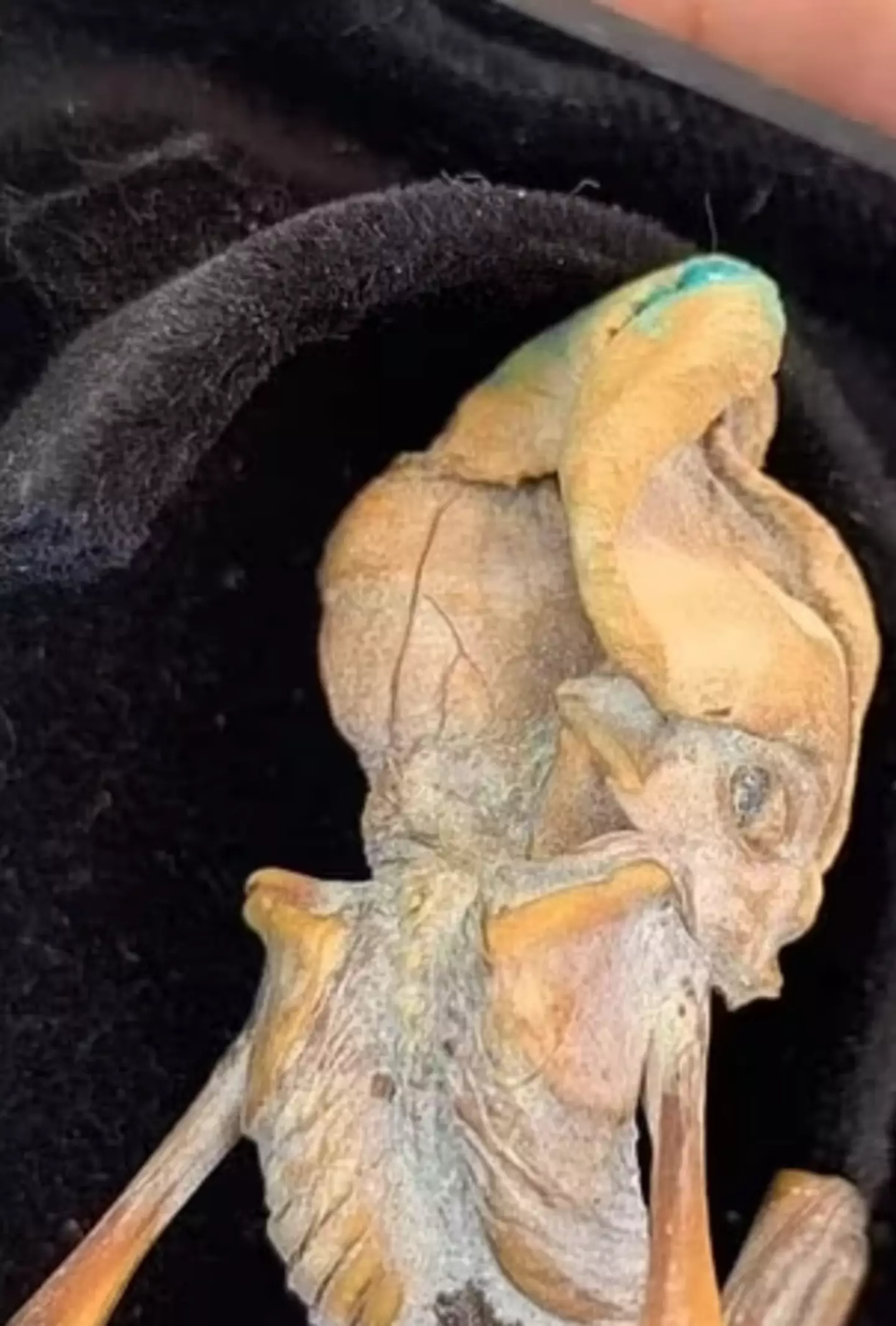
In our never-ending search for evidence of extraterrestrial life, it is suspected that a mummified foetus found in Colombia could be either an 'alien' or a 'tiny humanoid' from more than 800 years ago.
The alleged alien has an elongated skull, slanted eyes and an unusual number of ribs — the body seems to have 10 ribs on each side compared to a human's 12.
It was discovered in Colombia, with pictures sent by an anonymous source to Spanish alien researcher, Josep Guijarro.
Advert
Guijarro confirmed that it died in the foetal position, but is ‘cautious’ to call it an alien.
In a post on X (formerly known as Twitter), the veteran journalist and UFO researcher wrote: "My source told me it came from Colombia... I can't know exactly because I lack verifiable data."

"I am sure that someone in Mexico would have already given it the label 'alien,'' Guijarro wrote in espaciomisterio last week.
Advert
"In my case, I prefer to be more cautious," he added.
Guijarro is also open to the idea that the specimen may be a 'tiny humanoid' related to 'Ata,' an infamous, alien-like corpse unearthed in Chile in 2003.
Last year, Barcelona-based UFO hunter Ramón Navia-Osorio Villar, who had purchased 'Ata' from a treasure hunter, shared his theory that the remains were evidence of a race of tiny humanoids.
"They were very small people who lived in caves and only came out at night," he told Spanish television, "hence its strange almond-shaped eyes.
Advert
"A native friend from the Aymara tribe told me that these beings used to live with their ancestors before the Spanish settlers arrived."
Guijarro expressed an openness to the notion that the skeleton may be a member of this tiny race of people who were said to live in the Andes approximately 800 years ago.

He wrote: "The researcher Gilda Mora, from Colombia, said that she had news of these beings since the times of the Spanish conquest.
Advert
"Even today, there were references to them in a place called 'El cerro de los enanos,' ('the Hill of the Dwarves') in Colombia, which is very difficult to access."
However, researchers have previously called the theory behind 'Ata' absurd.
In 2018, Professor Siân Halcrow, a biological anthropologist at New Zealand's University of Otago published an analysis criticising Ata's 'alien' believers.
"We estimated the length of the femur, and we estimated that the foetus would have been about 15 weeks in-utero gestation," Halcrow explained to the Daily Mail.
Advert
Based upon this assessment, the skeleton most likely belonged to the foetus of a premature infant that died less than four months into pregnancy.
Skeptical scientists believe that the most recent discovery is also the remains of a human foetus.
And with that, the search for alien life goes on.
Featured Image Credit: Jam Press